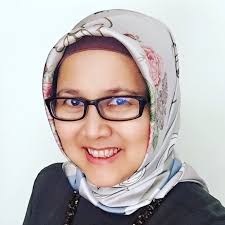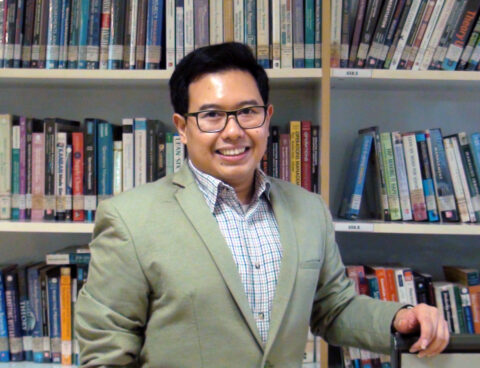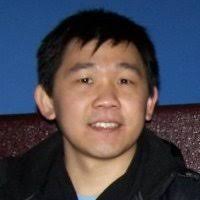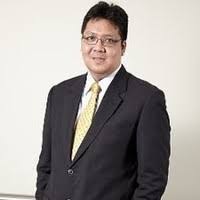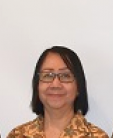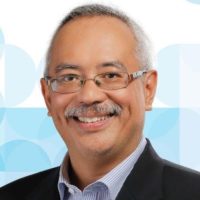Case Document
D’COST SEAFOOD RESTAURANT’S LOW-COST STRATEGY: THE LESS-TRAVELED ROAD TO SUCCESS
D’Cost Seafood Restaurant established a unique position in Indonesia’s restaurant industry; it successfully implemented its vision and mission to provide good quality seafood delicacies at a very affordable prices. Its tag-line, “Mutu Bintang Lima Harga Kaki Lima” (five-star quality at street hawker prices), was no marketing gimmick; it actually delivered that promise. Four years after the first branch opened, the business had 38 branches all over Indonesia.
The strong point of the D’Cost strategy was the huge faith on their customers and suppliers. Faith was the primary driver of their success, the underlying factor of their business strategy. Their supply chain strategy depended on good relationship with suppliers. Their promotion strategy was unheard in the industry – offering extras to customers. The Up To You Price, Age Discount, and Wedding Reception basically subsidized customers who, in turn became voluntary brand ambassadors.
BUKABUKU.COM – SELECTION, CONVENIENCE, AND PRICE
For Bukabuku.com, 2009 was a great year. The company closed the year with 37% more revenue than in 2008, which was on top of the 122% jump the year before. Everyone in the company celebrated this success and looked forward to a better 2010.
On the last day of work in 2009, Bukabuku.com’s founders Erwan Salim and Marsela Wewengkang called all their managers to the year-end meeting that would set the path of 2010. Despite the great success, they received signals from the marketplace that the Bukabuku.com’s growth momentum in the past four years had slowed down. While it might be a good time for consolidation after a series of explosive years, the slowdown was perceived to be coming too soon.
They needed to discuss this issue, set new expectation, and prepare the company’s direction for 2010. They had to decide on the following issues:
- Customer backorders and late deliveries: These sometimes led to sales loss and always to customer dissatisfaction. While most of this problem had been solved by increasing on-hand inventory, they felt the need to get to the root cause of the problem.
- Full warehouse capacity: Could they optimize their inventory level or should they look into getting a second warehouse?
- Internal business process and information system: Could they continue to rely on the company’s current processes to support future significant growth?
TIMAH: STRATEGIC IT TRANSFORMATION TO WORLD-CLASS TIN MINING
When Alwin Albar was assigned as the head of information system (IT) in late 2007, Timah was running an outdated software package to support its core transaction processing. His CEO, Wachid Usman, required a system that can be accurate and contain live information about the business. Timah needed a system that would give it better visibility of the performance of Timah’s diverse operation. Timah had implemented SAP software, but to get the level of information it wanted, the company required the ability to monitor data from production to sales and beyond. In addition, Timah required a supply-chain operation – from mining, production, and distribution – integrated with the company’s financial statement in order to increase its efficiency, as well as to provide the board with the ability to formulate faster and more accurate decision-making capabilities, thereby facilitating the conversion of product from the pit to the customer.
After approval and full support from the CEO, Wachid Usman, Timah prepared a detailed plan to execute this IT strategy. This was not an easy task. The existing platform used an old, legacy architecture that became obsolete when maintenance support ended in 2009.
IT BLUEPRINT READINESS FOR JAKARTA INTERNATIONAL MULTICULTURAL SCHOOL
Alexander Irwan, owner of Jakarta International Multicultural School, would like to invest in an IT solution that is aligned with the school’s vision. To translate the high-level aspect of the vision into doable elements, an IT blueprint be produced.
This case details how a team (the Mars Team) built the IT blueprint from start to finish. When the project had run during its first month, some tasks identified as low priority became more important. The project began to show signs that final implementation could be delayed. While there was no need to increase budget yet, Alex wanted to measure his organization’s readiness to accept the change. He wanted to have a readiness assessment.
TAKING THE LEAP: FROM PORN TO STAR
In 2008, Kaskus was voted as one of the most visited Indonesian websites according to Alexa.com. Kaskus was an online forum community which had grown by the word of mouth marketing of its members and mainly consisted of a user-generated content forum and a trading section. This local forum already had more than 350,000 loyal members who called themselves “Kaskusers” and participated in their own community culture. Kaskus contained a discussion forum with sub-forums covering a variety of topics including games, the buying and selling of goods, sports, automotives, and many others. What was unique about Kaskus was that it maintained all of its content in Bahasa Indonesia.
Its notorious BB-17 forum which mainly consisted of porn content, was heavily associated with KASKUS by the Indonesian Internet community. This burdened KASKUS’s image and its attempt to capture the tremendous growth of Internet users in Indonesia at that time. Facebook, Friendster and other online social networks has been grown explosively in Indonesia. At the same time, a new law on information and electronic media, Law No.11/2008 on Electronic Information and Transaction (ITE), came into effect and ruled that websites should not contain pornographic content. Therefore KASKUS were left with no choice but to drop BB-17. However, building a new positive image would be no an easy task.
With the new board of management, Ken Dean Lawadinata (CEO), Andrew Darwis (founder, CIO) and Danny Oei Wirianto (CMO), Kaskus was facing a dilemma whether they should remain exclusive or becoming a mainstream online content.
BLITZMEGAPLEX: RAISING THE BARS OF FUN AND FANTASY
In late 1980’s cineplex concept was popular in Indonesia and was one of the favorite place for the young people to hang out. There were only several cineplex players in Indonesia; however the Group 21 was the dominant players.
In 2006, Blitzmegaplex came with the concept of one stop entertainment and Beyond Movie tagline. In each of Blitzmegaplex location, there were eight auditoriums in minimum, which at least one theatre equipped with state-of-the-art RealD 3D technology for viewers to enjoy 3D movies. Blitzmegaplex also provided several entertainment corners such as Blitzgamesphere where game lovers could play Xbox 360 and Nintendo Wii games either alone or in group.
Besides its one stop entertainment concept Blitzmegaplex introduced “Blitzcard” as a medium to facilitate customers to book the movie ticket ahead of time or even for the same day performance.
ALL NEW CRV: ALIGNING MARKETING STRATEGY FROM GLOBAL INTO LOCAL
This case illustrates how the Honda prepared and globally market its product, the All New CR-V. as a global player in the automotive industry, Honda CR-V prepared toward multinational research to fit with consumer expectation. Markets its products globally, Honda has the advantage in terms of economy of scale and greater marketing opportunities.
When the CR-V to market in Indonesia, Honda do domestic marketing such as choosing the target market, product positioning, and integrated marketing communication. Many factors contributed to the success of the CR-V in Indonesia, but the value proposition CR-V looks to be a key factor. Honda is able to provide driving comfort sedan to a Jeep with a relatively lower price than its competitors at that time. Through this case study participant is expected to learn how to prepare a global company doing domestic product and marketing to increase product penetration.
GROWING TOGETHER IN PARTNERSHIP: THE CASE OF UNILEVER AND THE BLACK SOYBEAN FARMERS IN INDONESIA
THE CHARTER: THE CHAIRUL TANJUNG ENTREPRENEURSHIP
The topic about leadership and entrepreneurship style of Chairul Tanjung (known as Pak CT) is always interesting. His recent move on taking over the 40% share of Carrefour Indonesia on 2009 and announcement of being one of Forbes’ 1,000 richest business man in the world in the end of 2009 were considered bold and brilliant.
This case study discussed about CT’s leadership and entrepreneurship style that he was never labeled or branded before. He believes that business men have their own style and uniqueness in running their business. There was no such thing as identical styles that could be generalized. As he liked to share, he loves to teach in his own Bank Mega and is happy to be a visiting lecturer in Indonesia’s universities. The case study explores Pak CT’s opinion and experience for the benefit of others’ competencies development.
PT NYONYA MENEER: SURVIVING THE TRAGEDIES, LEADING TO SELF GOVERNANCE
One day in late October 2000, Charles Saerang sat in his office, reviewing the family conflicts and tragedies in the history of P.T. Nyonya Meneer. He is the third generation of the Meneer family and now fully controls the company. Charles reexamined the old Chinese saying that the first generation builds a company, the second generation expands it, and the third destroys it. He swore to himself that he would not let this happen. He wanted to turn the Nyonya Meneer into a world-class traditional medicine company and bring greater pride and welfare to its stakeholders. At this time Charles began with the idea of restructuring the company’s organization to have a structure that can accommodate and maintain a better relationship between the family, shareholders and the management in the future, while at the same time reflect the family’s governance.



